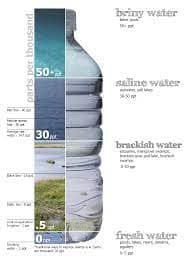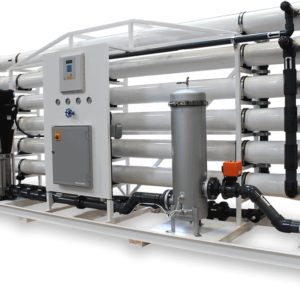Brackish Water Salinity
Buy on whatsappDescription
Introduction
Brackish water refers to water that has a salinity level between freshwater and seawater. It is a unique type of water found in estuaries, coastal wetlands, and other areas where freshwater from rivers or streams mixes with seawater. The salinity of brackish water can vary depending on the location and environmental factors. In this article, we will explore the concept of brackish water salinity, its significance in the brackish water ecosystem, and its impact on marine life.
Understanding Brackish Water Salinity
Brackish water is a mixture of freshwater and saltwater, creating an environment with intermediate salinity levels. While freshwater typically has a salinity of less than 0.5 parts per thousand (ppt), seawater has a salinity of around 35 ppt. Brackish water falls somewhere in between these two extremes, typically ranging from 0.5 ppt to 30 ppt.
Importance of Brackish Water Ecosystems
Brackish water ecosystems play a crucial role in supporting diverse forms of marine life. These environments serve as transition zones between freshwater and saltwater habitats, providing a unique and dynamic ecosystem. The mixing of freshwater and saltwater in estuaries, for example, creates a rich environment for various species of fish, crustaceans, and plants.
Impact on Marine Life
The salinity levels in brackish water have a significant impact on marine life. Different species of marine organisms have varying tolerances to salinity, and the ability to adapt to changes in salinity is crucial for their survival. This adaptation process is known as osmoregulation.
Some marine species, such as euryhaline species, can tolerate a wide range of salinity levels, allowing them to thrive in brackish water. Others, such as stenohaline species, are more sensitive to changes in salinity and require specific levels to survive.
Osmoregulation in Brackish Water
Osmoregulation is the biological process by which organisms maintain the balance of water and salt concentrations within their bodies. In brackish water environments, marine organisms must constantly regulate their internal salt concentrations to adapt to the changing salinity levels.
For example, when exposed to lower salinity levels, marine organisms may excrete excess water and retain more salt to prevent dehydration. Conversely, in higher salinity conditions, they may conserve water and excrete excess salt to avoid dehydration and maintain proper cellular function.
Desalination: Addressing Salinity Challenges
Brackish water salinity also poses challenges in freshwater supply, especially in areas where freshwater sources are limited. Desalination is the process of removing salt and other impurities from seawater or brackish water, making it suitable for various uses, including drinking water and irrigation.
Desalination technologies, such as reverse osmosis and distillation, are employed to extract freshwater from brackish water sources. These technologies play a vital role in meeting the increasing demands for freshwater in regions facing water scarcity.
Conclusion
Brackish water salinity is a fascinating aspect of the aquatic world. Its intermediate salinity levels create a unique habitat for diverse marine life and serve as important transition zones between freshwater and saltwater environments. Understanding the impact of brackish water salinity on marine organisms and the processes of osmoregulation and desalination helps us appreciate the delicate balance of ecosystems and address water resource challenges.




